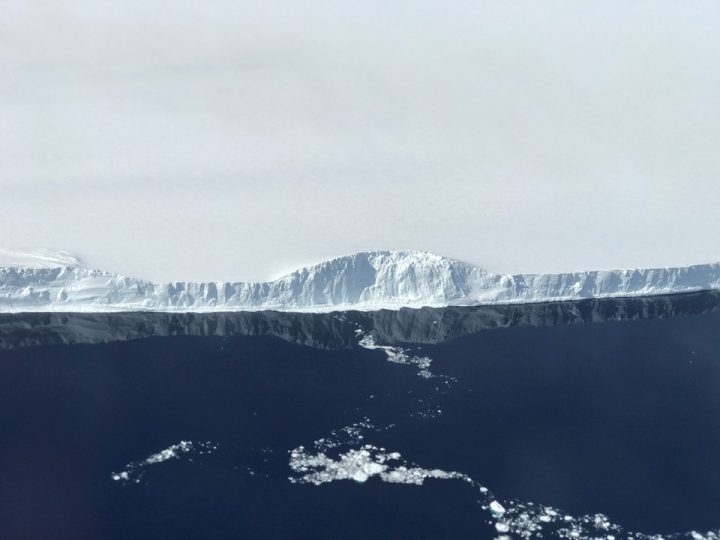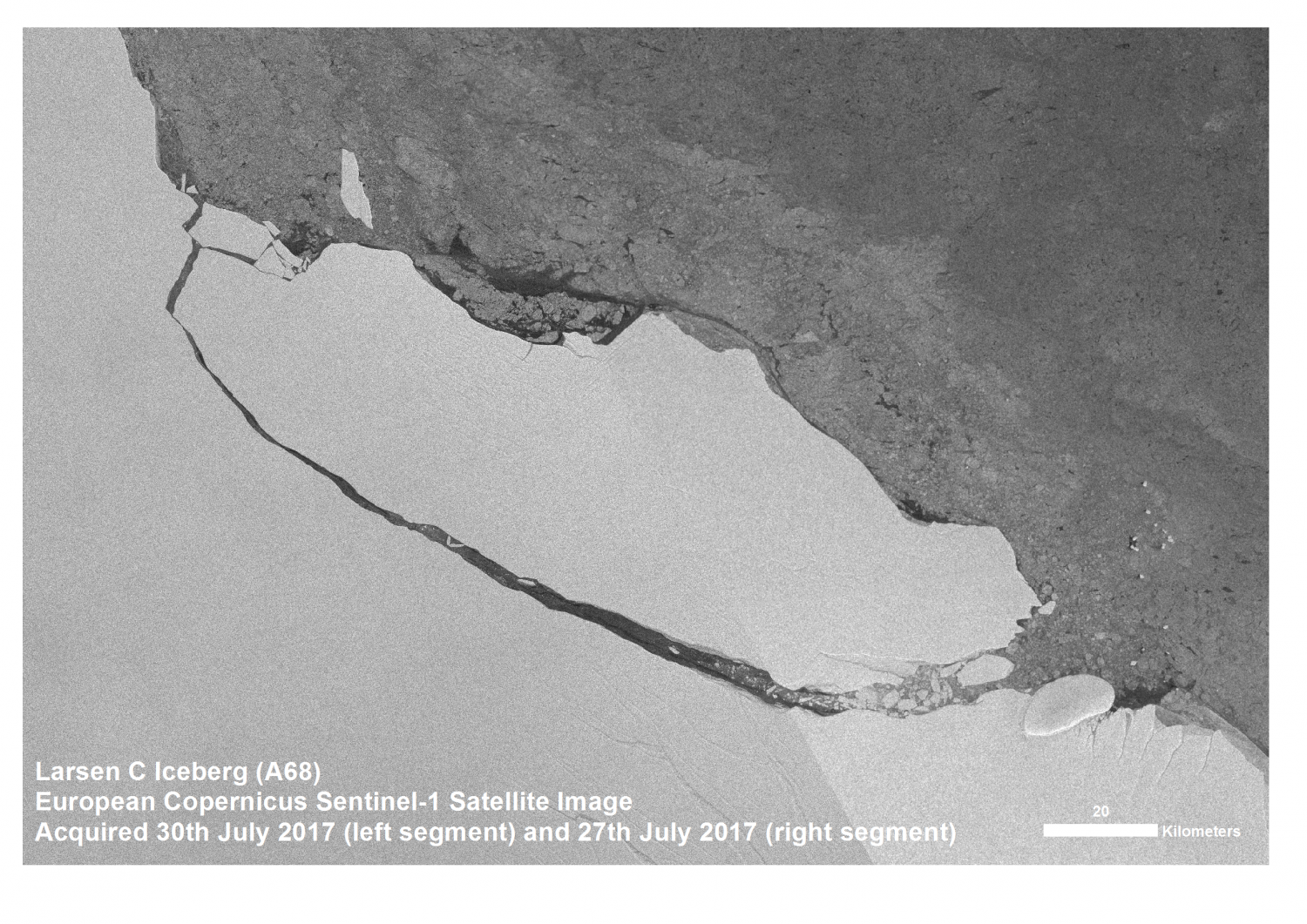Antarctica's trillion-tonne iceberg had a little Christmas reunion with the Larsen C ice shelf
Exclusive: The massive iceberg is expected to disintegrate but experts are unsure about when that may happen.
Earlier this year, one of the largest icebergs ever recorded — roughly 6,000sqkm in size — broke off from Antarctica and experts have since been tracking the trillion-tonne iceberg's movements, which is still making its way towards the ocean.
Earlier in December, the giant iceberg, which has been named the A68, was captured by the Sentinel1 satellite colliding with the Larsen C ice shelf from where it broke off in July.
On Christmas day, Stef Lhermitte, a remote sensing scientist and assistant professor at TUDelf, posted a satellite photo of the massive berg having what he called a "Christmas reunion" with Larsen C. In another tweet, Lhermitte, who has been tracking the A68 iceberg, posted a gif that shows the A68 bumping into the Antarctic ice shelf.
According to him, although this mini collision was not exactly expected, the A68's movements are not all that uncommon.
"At the moment it seems to be bumping into the Larsen C ice shelf a bit further north than A68's original location, but actually all this movement is very normal for a drifting iceberg whose path is determined by the ocean," Lhermitte told IBTimes UK.
"It might be the case that this bump will result in the opening of some of the most existent rifts, but in the life cycle of an iceberg there is nothing unusual about it. Nevertheless, as it is difficult to project the path of such an iceberg, it is not expected either."
In July, just weeks after the massive iceberg broke off from the frozen continent, a new rift was spotted in the Antarctic ice shelf. Lhermitte believes that the collision may result in the "opening" of some of the existing rifts in the Larsen C ice shelf.



In December, yet another Antarctic iceberg that broke off from the Pine Island Glacier, was observed completely disintegrating. When asked about whether the A68 also awaited a similar fate, Lhermitte told us: "It will eventually happen."
He said it may take anywhere from a few weeks to even years for the A68 iceberg to disintegrate. "It is difficult to say when A68 will disintegrate. If it gets stuck at the ocean floor it can stay there for a long period. If it quickly drifts north to warmer water it will probably desintegrate faster," he noted.
The iceberg is still making a slow progress toward the Wendell Sea and is expected to melt when encountered with warm waters. However, it may still be years before we see its impact on rising sea levels.
Iceberg #A68 is having a x-mas reunion with #LarsenC. Family visit at the northern, rifted edge of the ice shelf pic.twitter.com/Fbw6JDLsAI
— Stef Lhermitte (@StefLhermitte) December 25, 2017
The existing rifts in #LarsenC are accentuated in the latest #sentinel1 image showing iceberg #A68a bumping in pic.twitter.com/vNkOqKFuqy
— Stef Lhermitte (@StefLhermitte) December 27, 2017
Iceberg #A68 oscillations nudging a necklace of new iceberg debris off #LarsenC . Copernicus #Sentinel1 monitoring what 2018 holds for this iceberg flotilla. pic.twitter.com/a7i5v4xDyn
— Mark Drinkwater (@kryosat) December 29, 2017






